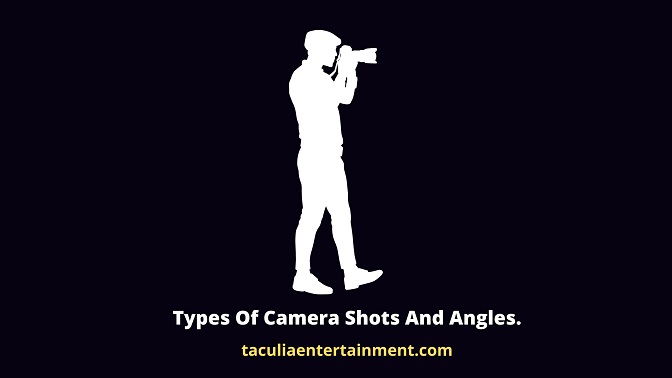
In filmmaking, how you frame and capture a scene can completely transform the story.
Camera shots and angles are essential tools that shape audience perception, convey emotion, and enhance narrative impact.
Whether you’re a budding filmmaker, content creator, or cinematography enthusiast, understanding the different types of camera shots and angles is critical.
This guide will explore the most common camera angles, their purpose, and how to use them effectively to tell compelling stories.
Camera Angles in Filmmaking
Camera angles determine how viewers perceive a subject or scene. The same moment can evoke entirely different emotions depending on the angle used. Here’s an in-depth look at the most important camera angles:
High Angle –
The camera looks down on the subject. This makes the subject appear smaller, weaker, or vulnerable. Often used to convey fear, submission, or inferiority.
Low Angle –
The camera looks up at the subject. This conveys power, dominance, or intimidation. Perfect for heroic characters or villains to emphasize authority.
Eye Level –
The camera is at the subject’s eye line. This neutral angle is used to create a natural, relatable perspective, often for dialogue or narrative balance.
Bird’s Eye / Top-Down –
A shot taken from directly above the subject. It provides spatial context, establishes geography, and can add dramatic or artistic impact.
Dutch Angle / Tilted –
The camera is tilted so the horizon is off-kilter. Creates tension, unease, or disorientation, often in thrillers or horror films.
Over-the-Shoulder (OTS) –
The shot is framed from behind a character’s shoulder. Highlights perspective and interaction between characters, commonly used in dialogue scenes.
Point of View (POV) –
Shows the scene from a character’s perspective. Immerses the audience directly into the character’s experience.
Close-Up Angle –
Focuses tightly on a subject or object. Highlights emotions, reactions, or fine detail.
Extreme Close-Up –
An even tighter frame, often on a single feature. Used for dramatic emphasis or to draw attention to crucial details.
Wide / Long Angle –
Captures the subject along with a large portion of the surrounding environment. Establishes context, scale, and spatial relationships.
| Angle | Definition | Purpose / Emotional Impact | Example in Filmmaking |
|---|---|---|---|
| High Angle | The camera looks down on the subject. | Makes the subject appear smaller, weaker, or vulnerable. | A villain looking over a captured hero. |
| Low Angle | The camera looks up at the subject. | Conveys power, dominance, or intimidation. | A hero standing tall against a threat. |
| Eye Level | The camera is at the subject’s eye line. | Neutral perspective; makes the audience relate naturally to the subject. | Standard dialogue scenes. |
| Bird’s Eye / Top-Down | Shot from directly above the subject. | Provides context of the environment; dramatic or artistic effect. | Battle scenes or cityscapes. |
| Dutch Angle / Tilted | The camera is tilted so the horizon is off-kilter. | Creates tension, unease, or disorientation. | Thriller or horror sequences. |
| Over-the-Shoulder (OTS) | Shot from behind a character’s shoulder. | Emphasizes perspective and interaction between characters. | Conversation between two characters in a drama. |
| Point of View (POV) | Shows the scene from the character’s perspective. | Immerses the audience in the character’s experience. | Horror games or first-person shots in films. |
| Close-Up Angle | Camera focuses tightly on a subject or object. | Highlights detail or emotion. | Close-up of a tear rolling down a face. |
| Extreme Close-Up | Very tight framing, often on a single feature. | Intensifies emotion or detail. | Focus on an eye, hand, or small object. |
| Wide / Long Angle | Shows the subject in full along with the surrounding environment. | Establishes context and scale. | A character walking through a vast landscape. |
Main Camera Shot Types
Close-Up Shot –
Tightly frames a subject, typically a face or object. Captures emotion and detail.
Medium Shot –
Frames the subject from the waist up, balancing subject and background. Ideal for dialogue.
Wide Shot / Long Shot –
Shows the entire subject with the environment. Establishes setting and context.
Over-the-Shoulder Shot –
From behind a character’s shoulder, emphasizing perspective and interaction.
Extreme Close-Up / Extreme Wide Shot –
Focuses very tightly or very broadly for dramatic emphasis or scale.
Camera Movements (Optional Section)
- Pan: Horizontal movement from a fixed position.
- Tilt: Vertical movement up or down.
- Dolly / Tracking: Camera moves along a track or follows a subject.
- Crane / Jib: Vertical movement using crane equipment.
- Handheld: Adds a raw, immersive, and dynamic feeling.
Tips for Choosing the Right Shot
- Consider the emotion: Match the shot with the mood you want to convey.
- Think about perspective: Angles can change how viewers perceive characters or scenes.
- Balance composition: Ensure shots are visually appealing and clearly tell the story.
- Experiment and adapt: Don’t be afraid to try unconventional shots for creative effect.
Conclusion
Mastering camera angles and shots is essential for effective filmmaking. Understanding how to use different angles not only improves visual storytelling but also creates the desired emotional impact for the audience.
Suggested Internal Links:
Close-Up Shots in Filmmaking: Definition, Uses, and Examples
Medium Shots: How to Frame Your Subjects Like a Pro
High Angle and Low Angle Shots Explained
Over-the-Shoulder Shots: Techniques and Cinematic Examples
Camera Movements: Pan, Tilt, Dolly, and Tracking Explained